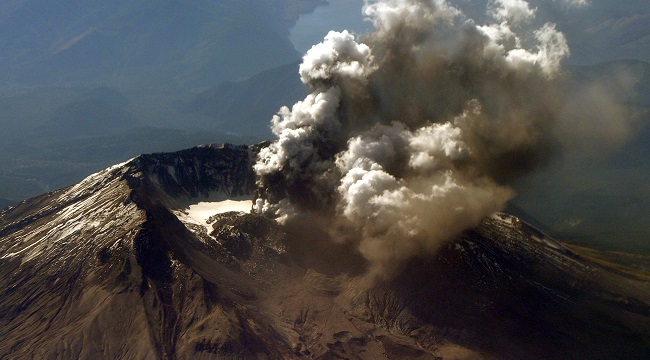
The air was grey. The glossy 3×7 photo of a 6-month-old baby looks like he’s plopped in the middle of a winter wonderland. When you flip over the photo it reads: May 18th, 1980. It wasn’t a spring blizzard, or freak storm. It was a volcanic eruption raining down ash on our little home over 100-miles away as a crow flies. I still have two old pickle jars of that ash. I keep them alongside that picture of me, all bundled up against the storm that Mount St. Helens wrought on the Pacific Northwest that day.
According to CNN, Mount St. Helens has recently been experiencing a surge in seismic activity. At first glance this is disconcerting given that the same mountain started spewing steam no less than 10 years ago. Not to mention that almost four decades prior, it blew its top and leveled about 230 square miles of forest. The same event also killed approximately 57 people, but that was a different time and set of circumstances.
Leading up to the 1980 eruption, St. Helens had been in hibernation for 123 years. Then in March of 1980, earthquakes began plaguing the mountain. On March 25th and 26th alone there were 174 quakes registering at least 2.4 on the Richter Scale. During April 1980, at least 5 quakes per day registered 4.0 or above. These increased to 8 a day the week before May 18th.
What we’re seeing today are 130 micro-quakes over the last 8 weeks — 40 of which occurred in one week last March. These micro-quakes all register between 0.5-1.3 on the Richter Scale. These patterns occurred several times in the 1990s, and more recently in 2013 and 2014. What this is telling us is that Mt. Saint Helens is a living object that’s over 275,000 years old. According to the USGS, as tectonic plates and magma moves around the Cascadia Subduction Zone, volcanoes register the happenings and basically recharge:
The magma chamber is likely imparting its own stresses on the crust around and above it, as the system slowly recharges. The stress drives fluids through cracks, producing the small quakes.
It’s a lot like our stomachs. They fill up and need to be discharged. While they’re empty they make all sorts of noises until they fill up again and [insert poop eruption joke here] boom!
So, no, you don’t have to worry about Mount St. Helens erupting again like it did in 1980. It simply doesn’t have the juice to do that yet. However, if Mount Rainer starts getting a swarm of earthquakes, run hard and run fast.
(Via CNN)






